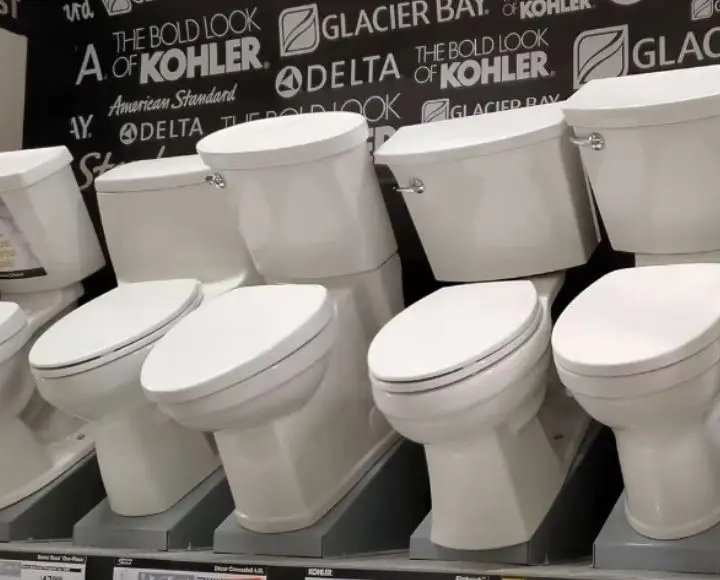Are you thinking of setting up a residential house? Perhaps, it’s a building for commercial purposes? Whatever the case, you have to think about waste disposal and your plumbing system. Why? Because waste should be eliminated in the right way to prevent blockages as well as conserve the environment.
Now, when it comes to your bathroom, you have to be extremely careful because your toilets rely heavily on the drainage system. With that in mind, you are probably wondering, how many toilets can be placed on a 3-inch drain?
Well, according to the Uniform Plumbing Code (UPC), a 3-inch drain pipe should be able to accommodate a maximum of 20 DFUs. This is because on average, one bathroom holds up to 5 DFUs. This means that a single drain pipe can accommodate up to 4 bathroom groups. However, the plumbing world sort of has an unspoken rule that states that no more than three toilets are on a 3-inch drain pipe.
At this point, you may be a bit confused, especially about some of the terms we have used, so let us define some of them.
Plumbing Code
These are a set of standards and regulations that are typically put in place by national, regional, or local authorities. This is done to guarantee proper maintenance, installation, and design of plumbing systems in both residential and commercial settings.
With plumbing codes, sanitation, safety, and public health are promoted.
DFUs
DFU stands for Drainage Fixture Unit, which is generally a unit of measure used in plumbing to determine the drainage load that various plumbing fixtures place on a drain system. DFUs help in estimating the capacity of a drain pipe and designing a plumbing system accordingly.
The Drainage Fixture Unit rating is assigned to each plumbing fixture based on its expected drainage flow and waste load. Different fixtures have different DFU ratings, which are standardized and provided by plumbing codes and industry guidelines. The ratings represent the relative volume and rate of wastewater discharge from each fixture.
Bathroom Groups
This is a common phrase in plumbing terminology, and it refers to a combination of plumbing fixtures that are typically found together in a bathroom. These fixtures are interconnected and share a common drainage system. A standard bathroom group typically includes a sink, a toilet, and a bathtub or shower.
The concept of bathroom groups is important when designing and planning plumbing systems for residential, commercial, or industrial buildings. By grouping these fixtures together, it becomes easier to determine the overall plumbing requirements, including pipe sizing, drainage capacity, and venting needs.
Factors to Consider when Determining the Number of Toilets to Place on a 3-inch Drain Pipe
Flow Rate
When you flush your toilet, there is an amount of water that is released each time – this determines the flow rate. Most modern toilets will use about 6 liters or 1.6 gallons of water during each flush. You need to consider the flow rate when calculating your drain pipe’s capacity.
Slope and Ventilation
The slope of the drain pipe and proper ventilation play significant roles in maintaining proper drainage. A steeper slope enhances the flow velocity and reduces the likelihood of clogs. On the other hand, good ventilation hinders the accumulation of gases and facilitates the general efficiency of the drainage system.
Size of Drain Pipe
Drain pipes can vary in size. They typically range in diameter from 1.5 to 6 inches. The size of the drain pipe directly affects its capacity to handle wastewater and solids. A 3-inch drain is commonly used for individual toilet installations in residential settings.
Fixture Unit (FU) Rating
Whether you are in a commercial or residential setting chances are high that you have more than one plumbing fixture. The Fixture Unit rating is a homogenous unit of measure that helps in determining the drainage load of your plumbing fixtures.
Each fixture has its FU rating that you can use to find out how much it contributes to the total drainage load.
Calculating Maximum Capacity
To determine the number of toilets that a 3-inch drain can handle, a calculation based on fixture units is required. Suppose we assume a conservative flow rate of 1.6 gallons per flush and a standard FU rating of 4 for each toilet. Given that a 3-inch drain has a maximum carrying capacity of approximately 60 fixture units, we can divide this by the FU rating of 4 to estimate a maximum of 15 toilets connected to the drain.
Installation Considerations
While the theoretical calculation suggests a maximum of 15 toilets for a 3-inch drain, practical considerations should also be taken into account during installation. Factors such as the layout of the plumbing system, the distance between fixtures, and the available space for drain pipes may limit the actual number of toilets that can be installed.
Professional Assessment
To ensure accurate calculations and proper installation, it is highly recommended to consult a licensed plumber or plumbing engineer. They possess the necessary expertise and knowledge to assess the specific requirements of your plumbing system, considering factors like local building codes and regulations.
Ultimately, the number of toilets that can be connected to a 3-inch drain depends on various factors, including flow rate, slope, ventilation, and fixture unit rating. While a theoretical calculation suggests a maximum of 15 toilets, practical considerations, and professional assessment are essential to ensure the plumbing system operates efficiently. By seeking expert guidance, you can determine the optimal number.
